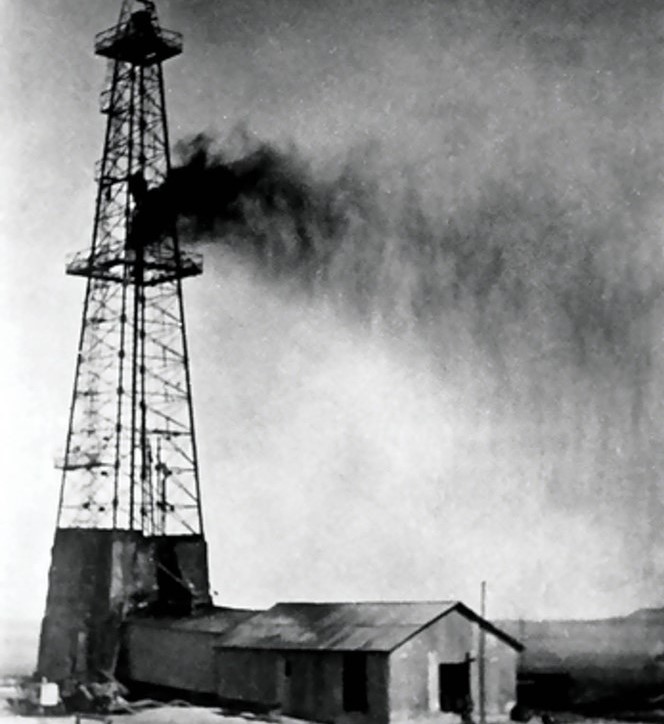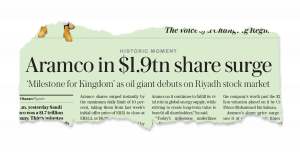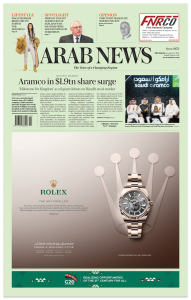- ARAB NEWS
- 05 Jul 2025

Frank Kane
Saudi Arabia’s gradual acquisition of Aramco by 1980 guaranteed its future success
Summary
Aramco began the 1970s as an American-owned company, but by the end was fully owned by the Kingdom, and was a vital part of its economy and the global energy industry. The transformation — achieved without the upheaval that many other Middle East countries suffered through oil industry nationalization — was the start of the process that culminated in last year’s successful initial public offering as the most valuable company in history. It has proved to be a defining event in Saudi history.
DUBAI: The 1970s was the decade in which, in the words of one of the leading policymakers of the era, Saudi Arabia became “masters of our own commodity” — the owner and operator of its gigantic oil industry, with all that meant for the economic development of the Kingdom and the wellbeing of its citizens.
The decade began with the Arabian American Oil Co. — a consortium of four US oil giants, holding an exclusive concession to develop Saudi Arabia’s most precious resource; it ended with an agreement to create Saudi Aramco, owned and operated by the Saudi government as the leading force in Middle East and global energy markets.
By 1980, Aramco was set on the path that enabled it, nearly four decades later, to become the most valuable company in history, in the biggest ever sale of shares on a stock exchange with last year’s record-breaking initial public offering on Saudi Arabia’s Tadawul.
But — and this is crucial to understanding the events of the 1970s — the process by which the Kingdom acquired ownership of Aramco was unlike many of the fractious confrontations in the Middle East oil industry in that era.
Whereas countries such as Libya, Iraq and Iran had simply confiscated American assets without compensation, leading to instability in global energy and geopolitics, Saudi Arabia negotiated the purchase of shares from the US owners in a gradual process that ensured good relations between the two countries. In the case of the Kingdom, the process was called “participation” rather than “nationalization.”
Saudi Arabia signs an oil concession with the Standard Oil Co. of California (SOCAL), and its subsidiary CASOC begins to survey for oil.

Commercial oil production begins from Dammam No. 7.

CASOC’s name is changed to Aramco (the Arabian American Oil Co.).
Ali Al-Naimi, who worked his way up through the oil company from office boy to president, becomes the first Saudi CEO, and the company is renamed Saudi Aramco.

Drones attack Saudi Aramco’s facility in Abqaiq and Khurais, temporarily interrupting production. Both the US and Saudi Arabia say Iran was behind the attack.

Saudi Aramco shares rise 10 percent above its IPO price in its stock market debut, becoming the most valuable listed company in history.

Ali Al-Naimi — then a rising star in the Aramco establishment, who later became its first Saudi president — encapsulated the era in his autobiography “Out of the Desert”: “The fact that the transfer didn’t involve an overnight nationalization of assets, as happened in several oil-producing countries, was a tribute to the sound judgement and good negotiating faith on the part of the country as well as the oil company owners.”
The man at the sharp end of the negotiations was a young lawyer who had been fast-tracked by King Faisal into high government office. Ahmed Zaki Yamani — author of the “masters of our own commodity” quote — was petroleum minister in 1968 when he told an oil conference in Beirut that it was the Kingdom’s ambition to acquire 50 percent of Aramco from its American owners. The number would change as the decade wore on, but the ambition remained the same: To get control of Aramco.

At 8 a.m. yesterday Saudi Aramco was a $1.7 trillion company. Thirty minutes later the oil giant was worth nearly $1.9 trillion as it made its debut on the Tadawul, the Saudi stock market in Riyadh.
From a story by Rashid Hasan on the front page of Arab News, Dec. 12, 2019
As Arab News columnist Ellen Wald wrote in “Saudi Inc.,” her recent history of Aramco: “It was a matter of what was in the best interests of Saudi Arabia and what he (Yamani) could convince the Americans was in their interest as well.”
By the early 1970s, Saudi Arabia was a strong weight in the global energy balance. Demand for oil was booming, and American oilfields were not able to meet it. Saudi Arabia was spoken of for the first time as the “swing” exporter, the most important producer with capacity and reserves to help meet global demand at the turn of a pump wheel.
At a meeting of the Organization of the Petroleum Exporting Countries (OPEC) in Vienna in 1972, Yamani was presented with an offer by the Americans to purchase 20 percent, some way off his initial demand for half of Aramco. But negotiations eventually led to agreement that Saudi Arabia would buy 25 percent, and eventually 51 percent. Control had been ceded — in principle — by the Americans.

At the same OPEC venue the following year, the process was accelerated by external events. The 1973 war between Israel and Arab countries broke out just before the oil ministers arrived in Austria, and the meeting was conducted in emergency conditions. As oil historian Daniel Yergin described in his Pulitzer Prize-winning book “The Prize”: “The three decade old postwar petroleum order had died its final death.”
Arab countries, led by the largest oil producer Saudi Arabia, hiked the price of oil dramatically — to more than double the $5 per barrel it had been selling at previously. More significantly, it cut production and imposed an embargo on countries, including the US, which were supplying Israel with military equipment to fight the war.
By the early 1970s, Saudi Arabia was a strong weight in the global energy balance.
Frank Kane
The resulting turmoil in global economies and energy markets changed everything. By 1976, power had moved inexorably away from the independent oil companies to the producers, led by Saudi Arabia.
At a meeting in Panama that year, Yamani was in no mood to delay any longer. The Kingdom wanted a commitment from the Americans to sell all their remaining shares. By mid-March the deal was done, effective 1980, and Saudi Aramco was officially renamed eight years later.
The price that the Kingdom paid for the shares was never revealed, but speculation at the time suggested that around $2 billion passed hands. Last December, publicly listed Aramco was valued on Tadawul at roughly 1,000 times that.
Wald told Arab News: “The real reason Aramco was able to become the successful company it is today is that once it became a Saudi firm, the oilmen continued to control it and its money, as opposed to government bureaucrats. This was unique among national oil companies.”